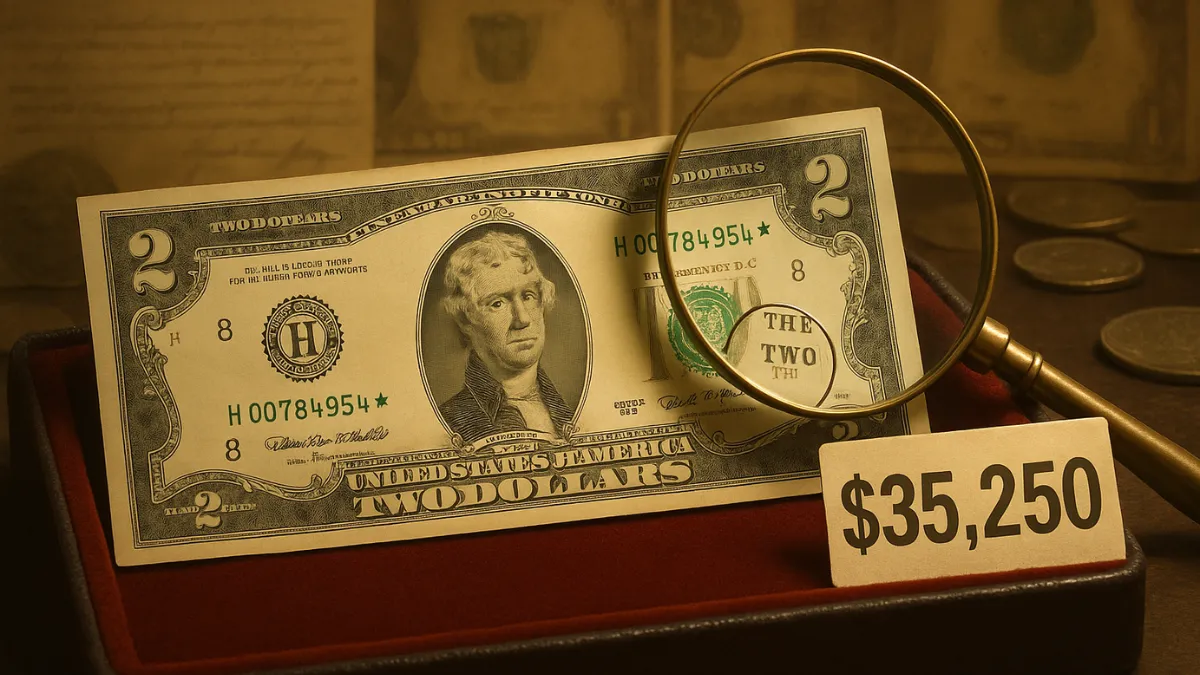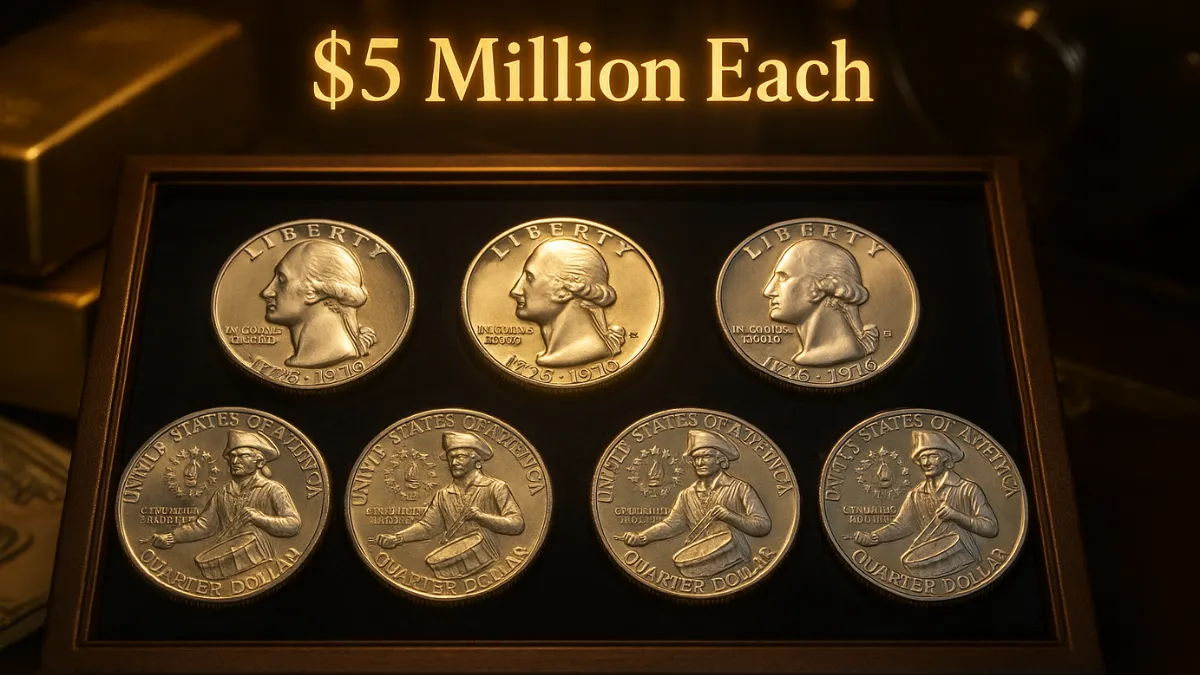Understanding the 1976 $2 Bill: History, Value, and What Makes It Special
The 1976 $2 bill stands as more than just a piece of currency—it’s a commemorative artifact reflecting a significant moment in American history. Created to honor the bicentennial of U.S. independence, this note holds special value for collectors and history enthusiasts alike.
While the $2 denomination itself has a long-standing legacy, the 1976 series introduced design elements that set it apart. From its unique imagery to the rarity of certain features, this bill tells a story of patriotism, preservation, and collectibility. Let’s dive deeper into the history, distinct characteristics, and potential value of this iconic currency.
What Makes the 1976 $2 Bill Unique?
The front of the 1976 $2 bill features the familiar portrait of Thomas Jefferson, a design that has appeared on earlier editions. What distinguishes this series, however, is its back design—an engraving of John Trumbull’s historic painting The Declaration of Independence. This artwork vividly portrays the presentation of the Declaration to the Continental Congress, connecting the currency directly to the nation’s founding moment.
Interestingly, these notes were not widely circulated when they first debuted. At the time, many Americans saw little practical use for a $2 bill during a tough economic period. Holding onto one seemed excessive, much like the idea of saving a $1,000 bill today might feel unnecessary. As a result, fewer were used in everyday transactions, contributing to their scarcity today.
A Little History Behind the 1976 Series
In the early 1970s, the U.S. Congress approved the issuance of a special commemorative $2 note to mark the 200th anniversary of the Declaration of Independence. Officially released on July 5, 1976, this bill was a key part of the bicentennial celebration. Despite carrying the 1976 date, no additional bills of this exact design were produced until nearly two decades later, in 1995.
Many of these original notes were stored away or collected shortly after release, meaning that a large number remain in excellent condition today. Their relatively pristine state and limited circulation have increased their appeal among paper currency collectors.
How to Determine if a 1976 $2 Bill Is Worth More Than Its Face Value
Collectors and appraisers evaluate several factors when determining the value of a 1976 $2 bill. These include physical condition, printing anomalies, and unique serial numbers. Here’s what to consider:
Condition (Grade): The better the condition—free from folds, stains, or tears—the higher the value. Crisp, uncirculated notes are the most desirable.
Serial Numbers: Low numbers, repeating digits, or palindromes tend to attract more attention and demand from collectors.
Signatures: The 1976 bills bearing the signatures of Arthur Burns and Robert B. Anderson are notable. These are the final signatures used for that series, adding a bit of exclusivity.
Federal Reserve District: Each bill originates from one of 12 Federal Reserve Banks. Notes from districts with lower print runs, such as Kansas City or Dallas, may be considered rarer.
Star Notes: If the serial number ends with a star (*), it means the note was printed as a replacement for a defective one, making it rarer and more collectible.
Post Office Stamps: Some bills were marked at post offices on the release day, which can significantly enhance their value due to the added historical context.
How Much Could a 1976 $2 Bill Be Worth?
The actual market value of a 1976 $2 bill depends on several criteria such as condition, rarity, and collector interest. Here’s a breakdown of estimated values across different categories:
Low-Price Bills (Under $20)
These are usually circulated bills with visible wear and tear. Though still collectible, they are more affordable for entry-level hobbyists.
Example: A heavily used note might bring in $5. An uncirculated bill from the Dallas (“K”) district could sell for $9.90, while one from Kansas City (“J”) in better condition might reach $16.50.
Mid-Range Bills ($20–$500)
In this range, you’ll find better-preserved notes with distinctive features like star markings or postal cancellations.
Example: A New York star note might fetch $95. A clean bill with a first-day issue post office stamp can command $399. A Kansas City star note bearing a signature could go for approximately $257.
High-End Bills ($500–$2,500)
These notes often have pristine condition and rare features such as low serial numbers, autographs, or grading from a currency certification agency.
Example: A perfect star note with an autograph could sell around $850. A bill with a rare serial number like 33 might bring in $2,000. Two consecutive notes with special serials could be valued at over $2,000.
Premium Collectibles ($2,500 and Up)
This elite category includes some of the rarest finds—pristine condition, low or unique serial numbers, and sometimes even full bundles.
Example: An unopened pack of 100 uncirculated notes might fetch $3,450. A bill with serial number “00000002” was sold for $9,400. A San Francisco-issued note bearing serial “00000001” reached a selling price above $21,000. The only known privately owned star note with serial number 1 was auctioned for a staggering $35,250.
FAQs
How can I identify a star note?
Look at the serial number—if there’s a star (*) at the end, it’s a star note. These are printed as replacements for misprinted notes and are often rarer.
Are there any printing errors I should look for?
Yes, errors like mismatched serial numbers, missing design elements, or cutting mistakes can significantly increase the bill’s value.
How can I verify if my bill is authentic?
Genuine notes from 1976 should feature clean printing, correct paper texture, and precise serial numbers. While modern security features like watermarks weren’t present, the quality of engraving and ink still help in confirming authenticity.
Final Thoughts
The 1976 $2 bill is more than a nostalgic piece of paper—it’s a tribute to America’s bicentennial and a collector’s treasure. Whether you’re just starting out or already have a passion for numismatics, this bill offers something unique: a tangible link to history.
With a wide range of values and features to explore, it’s possible to find bills that suit any budget. From lightly used notes to premium collectibles worth thousands, the 1976 $2 bill provides both educational and financial value. Remember to handle your notes carefully, verify their authenticity, and most importantly—enjoy the fascinating world of currency collecting.




